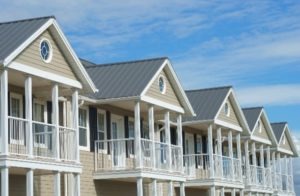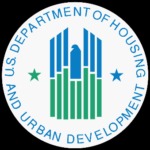

Blog
To ensure compliance with the FHA, it is important to incorporate one of the HUD approved safe harbors into the design of a multifamily development.


Even though the Fair Housing Act (FHA) has been in effect for more than 30 years, owners, developers, architects and others are still cited for noncompliance with the FHA’s seven design and construction requirements. Based on our experience, a major contributing factor to this continued noncompliance is the common misconception that following the accessibility requirements of a building code (e.g., current editions of The International Building Code) will result in compliance with the FHA. To ensure compliance with the design and construction requirements of the FHA, it is important to incorporate one of the U.S. Department of Housing and Urban Development (HUD) approved safe harbors into the design of a multifamily development. The long-standing list of safe harbors has not been updated in nearly 14 years, when the 2003 edition of the ICC A117.1 Standard was approved by HUD. Before that, the 2006 edition of the International Building Code was the latest version of the code to be HUD- approved as meeting the design and construction requirements of the Act. As a result, while the building codes have continued to progress, HUD has lagged behind – until now.

In the December 8, 2020 edition of the Federal Register, HUD published a final rule adopting additional safe harbors that can be used to demonstrate compliance with the design and construction requirements of the FHA. As stated in the register, effective March 8, 2021, the 2009 edition of the International Code Council Accessible and Usable Buildings and Facilities A117.1 Standard and the 2009, 2012, 2015, and 2018 editions of the International Building Code (IBC) can be used to demonstrate compliance with the design and construction requirements of the FHA. This is a long-awaited update and an important step toward bringing building code and FHA requirements together for designers.
With this step forward, we at Steven Winter Associates, Inc. (SWA) cannot help but look back at how we got here, and the role we played in the development of HUD’s early safe harbors.

In the 1980s and early 1990s, SWA conducted ground-breaking research for HUD’s Office of Policy Development and Research (OPD&R) and Office of Fair Housing and Equal Opportunity (FHEO) that formed the basis for building industry related policy development and supported efforts to promote and enforce fair housing initiatives. As one of HUD’s contractors at that time, SWA produced The Cost of Accessible Housing, Universal Design Principles in Practice, and the study titled Multifamily Building Conformance with the Fair Housing Accessibility Guidelines, among numerous other published research projects. Subsequently, based on our experience producing these early research publications. HUD hired SWA to advise its Model Code Working Group, convened to develop what would become one of the early safe harbor documents to be approved by HUD as meeting the design and construction requirements of the FHA.
In 1998, HUD awarded SWA a contract to review and analyze the model building codes that existed at that time and the not-yet-published first draft of the IBC 2000. Our charge was to identify sections of the codes that did not meet the requirements of the FHA and implementing regulations, and the Fair Housing Accessibility Guidelines (Guidelines). HUD requested that SWA supplement its analysis with recommendations on how each identified variance could be revised to conform with the FHA, the regulations, and the Guidelines. On November 10, 1999, Peter Stratton, SWA’s current Managing Director of Accessibility Services, presented the findings of the analysis during a public meeting held in Washington, D.C. The final report was published in the Federal Register on March 23, 2000.
HUD concluded that SWA’s “…final report acknowledges that the model building codes reflect most of the technical requirements of the Act. In addition, the final report found that all model building codes applied accessibility requirements to most, but not all, of the covered multifamily dwellings that are subject to the design and construction requirements of the Act. The report identifies areas where the model building codes need to be revised to ensure that they are consistent with the requirements of the Act and makes recommendations to assist the model building code organizations in developing model building codes that are consistent with the design and construction requirements of the Act.”[1]
Recommendations included in the report were published in a document produced by the International Code Council (ICC) titled Code Requirements for Housing Accessibility 2000 (CRHA). The CRHA document was approved by HUD as a safe harbor for FHA compliance and became the 2001 Supplement to the first edition of the IBC 2000. Together, the IBC 2000 along with the 2001 Supplement became another HUD-approved safe harbor for FHA compliance. Eventually, the supplement was further developed and rolled into Chapter 11: Accessibility of subsequent editions of the IBC. HUD went on to approve the 2003 and 2006 editions of the IBC, but until the December 8, 2020 final rule, no further editions were approved, despite the progression of the code cycle.
In the December 8, 2020 final rule, HUD acknowledged that it “found that the accessibility provision of these IBC editions [2009, 2012, 2015, and 2018] are consistent with the requirements in the Act, HUD’s regulations, and the Guidelines.” And, that it “…did not find any provision that it believes provides less accessibility than what is required in the Act, the regulations, and the Guidelines.” Further, “HUD notes that in certain respects, the IBC provides for greater accessibility. Similarly, in its review of ICC A117.1 2009, HUD did not find any provision that provide for less accessibility than what is required in the Act, HUD’s regulations, and the Guidelines.”[2]
HUD’s adoption of additional safe harbors is good news. In fact, the design and construction industry has been asking HUD to update its safe harbor documents for years. But what does this mean for designers? With the expanded list of safe harbors, how do you choose which one makes the most sense for your project?

For jurisdictions that have adopted the 2009, 2012, 2015, and 2018 editions of the IBC, including Chapter 11: Accessibility:
Use the 2009, 2012, 2015, or 2018 edition of the IBC to ensure compliance with both building code and FHA.
Because these editions contain scoping criteria that HUD has determined to be equivalent to or greater than those required by the FHA; and because they reference editions of the A117.1 Standard (2003 and 2009) that are also HUD-approved safe harbors, it makes most sense to use the relevant IBC edition adopted by the jurisdiction as a means of demonstrating code and FHA compliance. This is really what the industry has been waiting for, i.e., a time when compliance with one code and standard will suffice to satisfy code and FHA requirements. That time starts on March 8, 2021.
For jurisdictions that adopt the IBC, but modify or do not adopt Chapter 11: Accessibility:

This is where it gets more complicated.
HUD clarifies in its final rule that “persons designing and constructing covered multifamily dwellings should understand that to be correctly applied to ensure compliance with the design and construction requirements of the Act, each safe harbor must be read in the context of the requirements of the Act itself, HUD’s implementing regulations, and the Fair Housing Act Accessibility Guidelines.” HUD’s clarification is most relevant in jurisdictions that have not adopted Chapter 11: Accessibility, which includes Florida, Georgia, Massachusetts, and most jurisdictions in Maryland, among others.
In jurisdictions such as New York City, New Jersey, or California, among others, which have adopted one of the HUD-approved safe harbor editions of the IBC, but modified Chapter 11: Accessibility so that it no longer aligns with the safe harbor editions of the IBC, HUD clarified in a prior safe harbor rule published in the Federal Register on July 18, 2007, that “…the owner, developer and designer must comply with the safe harbor in its entirety without modification or waiver.” To that end, any modified version of Chapter 11: Accessibility is not a HUD-approved safe harbor for FHA compliance. From HUD’s perspective, “If it is shown that the designer and builder departed from the provisions of a safe harbor document, they bear the burden of demonstrating that the dwelling units nonetheless comply with the Act’s design and construction requirements.”
So, what safe harbors make the most sense to use in these jurisdictions? In our opinion, the FHA Guidelines or the Fair Housing Act Design Manual (FHADM) continue to be the best fit for these jurisdictions. The Guidelines are the least stringent safe harbor with the FHADM coming in at a close second. Because each of these safe harbors reference the 1986 edition of the A117.1 Standard, designers can choose to continue to use the less onerous 1986 edition of the A117.1 Standard or the more recent 2009 edition of the A117.1 Standard. In other words, use the Guidelines or the FHA Design Manual along with the A117.1 2009 Standard.

We’ve only just scratched the surface of what the additional safe harbors mean for designers and how to choose the correct safe harbor for your project. We’re sure you have more questions:–
For answers to these questions and more, stay tuned for Part 2 of this blog. And, please leave a comment or reach out to us through the Contact Us page of our website with any additional questions you’d like us to answer.
[1] Federal Register, December 8, 2020
[2] Federal Register, March 23, 2000
Peter Stratton